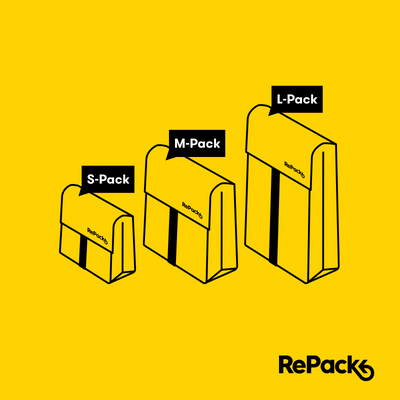
The Microfibre Challenge
Why every time you wash your clothes, you are contributing to ocean plastic pollution. And what you can do about it.
Want to know a shocking truth? Microfibre from your clothing is one of the most significant contributors to plastic pollution in our oceans.
Yes, unbelievably, the simple act of doing your laundry contributes to more than one third of all the plastic waste that ends up in the sea. Every load of washing, our clothes shed tiny, invisible microfibres that end up polluting the aqueous ecosystems of the world.
While these microfibres can also be shed by natural fabrics, these tend to fully biodegrade over time – from a few months for organic cotton, to a few years for wool or silk. But it is the myriad of synthetic fabrics present in our clothing that are ultimately the most damaging to the environment.
Examples of such fabrics include polyester, nylon, acrylic and polyamide materials, as well as chemical covered non-plastics, plus associated dyes and heavy metals. These all go down the pipes of our washing machines, into our drains, through wastewater treatment facilities, where they slip through filtration systems and into our waterways, ending up in the rivers – and ultimately the sea.
Most of us don’t even know there is so much plastic from our clothing flowing through our waterways and oceans, right in front of our very eyes.
That’s not great for the animals living in those waters, or for us humans, who may end up ingesting these microfibres if they enter the food chain.
The Microfibre problem explained
Every time we use our washing machines, their rolling undulations slowly and imperceptibly break our clothing up, shaking out up to 250,000 individual pieces of microfibres for just one fleece jacket alone, for example.
These microfibres present an enormous ecological hazard – preventable plastic and chemical waste that is literally spilling down the drain beneath our feet. In London alone, we could have several billion microfibres flowing into the River Thames every day.
Everyone who wears and washes clothes is part of this pollution problem. Which is all of us.
And everyone who eats or breathes could suffer the consequences. These synthetic microfibres have been found in plankton, fish, sea salt, bottled water and even beer, honey and chicken. They have also been found in the deepest ocean trenches and the furthermost extremes of the polar regions.

Microfibres are a growing global pollution challenge that eco activists are rapidly becoming aware of.
How we fight it is up to us.
What you can do about it
- Avoid Delicate Wash Settings
Scientists at Newcastle University recently discovered that delicate wash settings shed hundreds of thousands more microfibres than standard washing machine settings.
- Wash at Lower Temperatures
According to Friends of the Earth, a lower temperature wash is less jarring and therefore less likely to shake out microfibres from your clothes.
- Pack your Washing Machine
This ostensibly reduces friction between the garments in your laundry load, further reducing the likelihood of microfibres being shed.
- Wash at Lower Spin Speeds
Again, reduced friction=less microfibres.
- Get a Cora Ball
This revolutionary product will collect up to 26% of the loose fibres in your wash (see below)
Introducing the Cora Ball
At Afterglow all of the components of our clothes, from the fabric to the zips and thread are produced from recycled, repurposed or sustainable materials.
Yet while we strive to make garments that are both eco-friendly, durable and functional, we cannot prevent them from shedding microfibres in the same way that ordinary, non-sustainable clothes do.
But we are determined to do whatever we can to mitigate this problem and to help contribute to the solution. Which is why the Cora Ball is the perfect addition to our product line.
Created by a United States-based non-profit company, the Cora Ball is the world’s first laundry ball, which can collect more than a quarter of the invisible, environmentally-damaging synthetic microfibres your clothing sheds in every laundry load.
If only 10% of UK households used a Cora Ball in their washing machine, we could keep the plastic equivalent of more than six million water bottles from washing into our public waterways every year. That is enough water bottles to reach from London to Helsinki.
Afterglow is one of only three official distributors of the Cora Ball in the UK. The Cora Ball itself is also made out of recycled plastic – both post-consumer and from manufacturing (which would have gone to landfill) – and it is also recyclable, so it is a triple win.
Help us to solve the microfibre challenge. Join the movement and get yourself a Cora Ball.
To find out more about the Cora Ball, click here
The Microfibre Challenge: Fast Facts

Plastic-derived synthetic materials (such as polyester, nylon, acrylic and polyamide) make up 64% of all new fabrics produced.

The average laundry load releases between 9 million and 17 million - yes seventeen million - microfibres, most of which end up in the ocean.

Just one fleece jacket has the potential to shed around a quarter of a million pieces of microfibre in one wash alone.

As a result, plastic particles from products such as synthetic clothes comprise up to 35% of the primary plastic pollution in our seas.

If 10% of UK households used a Cora Ball, we could keep the plastic equivalent of over six million water bottles from washing into our public waterways every year. That is enough water bottles to reach from London to Helsinki.



0 comments